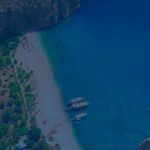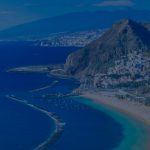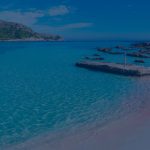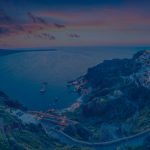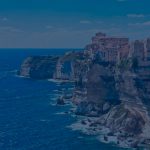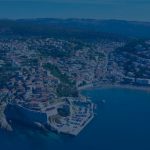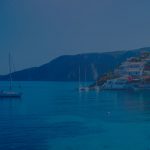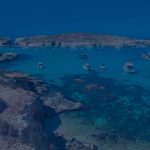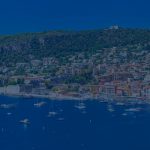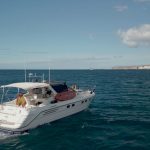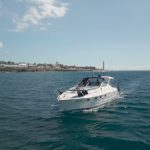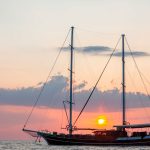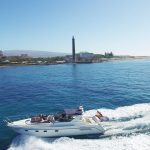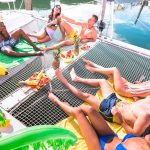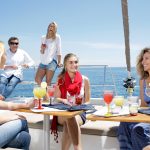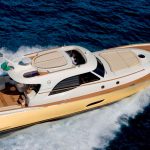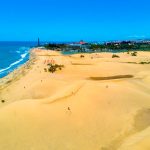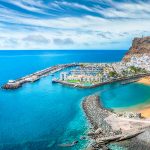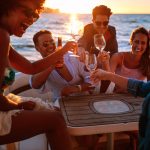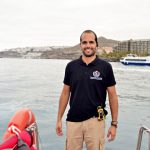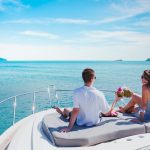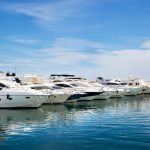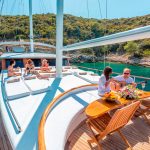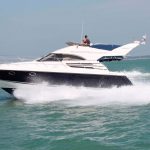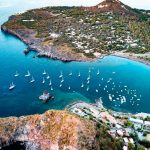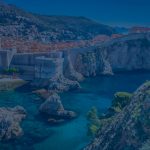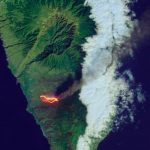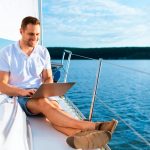
We recover the best of our past and present, to implement it in the future

The past already augured a great future for the islands. This is how it was known to see, from the times of the Greeks and thus, centuries later, travelers from all over the world discovered and continue to do so, some Canary Islands full of healthy properties, a unique climate, mild temperatures with days full of light, pure marine air and a host of natural resources that have made the Canary Islands a paradise of wellness.
What is happening today is nothing more than a pause, more or less lasting, but it will be overcome and when that moment comes, we must be prepared to face new ways of doing things, new challenges that we will have to overcome and that require of all our imagination and creativity to overcome them. Everything that makes our tourist destination a world-class destination will remain there, as it has for centuries, but it has been necessary to evolve and adapt to changes that different stages of life have required. Now we must be proactive, rather than reactive, because absolutely everything will be different. We return to the future and there we will wait patiently for things to return to normal. But those yes, will not catch us off guard.

Ocean Charter Club offers you, when all this crisis is over, a return to the future through a multitude of sailing options, making available boat rentals in Gran Canaria, Lanzarote, Fuerteventura or Tenerife, whether they are crewed and all inclusive or bareboats (without crew). Yachts, sailboats and catamarans so you can enjoy your nautical charter during the hours, days or weeks you want.

The Canary Islands have more than 30 ports and marinas, with capacity for ships of all lengths. The vast majority of them have modern and advanced facilities that offer a wide range of services such as on-board catering, workshops, restaurants … everything necessary to supply the boats and its crew, during the day, days or weeks of its duration navigation since, thanks to its climate, there are privileged conditions throughout the year, to enjoy the sea for almost 365 days.

Fuerteventura beaches with Lanzarote in the background
But it is that, in addition to sailing, there is much to see and do in the Canary Islands, apart from its enormous golden sand beaches or its wild corners and coves (only accessible by sea) to discover an endless number of museums, areas and shopping centers, restaurants, aquariums, golf courses, etc.

Ocean Charter Club ofrece estas y otras muchas opciones, para yates, veleros y catamaranes. Opciones que están teniendo gran acogida por parte del publico en general, y no solo en épocas de crisis, como la que vivimos actualmente debido al COVID 19, sino a lo largo de los últimos años, lo cual ha venido a dinamizar, aún más, el sector del charter náutico, Y es que si analizamos las ventajas que reporta la economía colaborativa, para las parte intervinientes, no cabe duda que esta fórmula, ha llegado para quedarse.
Cliffs of the southwest of Gran Canaria

Meloneras Golf, next to the Pasito Blanco Yacht Club (Maspalomas)
A BRIEF HISTORY, GASTRONOMY AND PLACES TO VISIT:
Beginning in the 16th century and for long years inhabited by Canarian aborigines, Europeans became interested in the archipelago, whose conquest began in 1402, with the expedition of the Normans Jean de Bethencourt and Gadifer de la Salle. A second stage of the conquest, that of realengo, was initiated by the Crown of Castile in 1477. After the Spanish conquest, human and cultural miscegenation gave rise to modern Canarian society

Las Palmas marina

Cathedral of Las Palmas Gran Canaria
GASTRONOMY OF THE ISLANDS
The gastronomy of the Canary Islands is made up of the traditional dishes of the archipelago and constitutes an important element of the cultural identity of the Canarian people. It is characterized by its simplicity, variety, richness of ingredients, and different recipes with Latin American and continental African influences can be found on each island. In this sense, we can cite some of the typical Canarian dishes such as:
Typical local fish.
Canarian old clothes.
Canarian style boiled potatoes.
Rabbit in Salmorejo.
Sancocho.
Gofio.
Watercress soup.
Poached cheese with mojo

Canarian gastronomy

Papagayo Beach (Lanzarote): In the south of Lanzarote there is one of the most popular beaches on the island: Papagayo, a cove of white sand, small dimensions and enormous beauty. In the shape of a bay or shell (as some residents prefer to describe it), Papagayo seduces with its transparent emerald waters that remain motionless all day as if it were a swimming pool.

Isla de Lobos: The small island is fully protected and forms the Islote de Lobos Natural Park. It houses more than 130 plant species and several species of birds, highlighting the herring gull, the great bustard (at certain times of the year) and the ashy shearwater. The seabed is an underwater reserve area and contains great ecological wealth.
Its name is due to the fact that in the past, monk seals or monk seals from the Mediterranean (also known as sea lions) lived on the island, now in danger of extinction. The fishermen eliminated the species, since they thought that its voracity reduced the marine resources of the area. Each of these animals needs between 30 and 40 kilograms of fish a day. Efforts are underway to recover the sea lions, despite the fear, due to ancient legends, of the fishermen

Jameos del Agua (Lanzarote): The Jameos del Agua, like the Cueva de los Verdes, are located inside a volcanic tunnel produced by the eruptions of the Corona Volcano. Los Jameos are located in the section of the tunnel closest to the coast. They owe their name to the existence of an inland lake originated by marine leaks, and which constitutes a unique geological formation.+ info

Maspalomas Beach and Natural Park of the Dunes (Gran Canaria) Maspalomas, is the main tourist center of the island. Its name, despite being Castilianized, owes it to the Guanche language, specifically from the evolution Masabbă-mas> Masppalomas> Maspalomas, which means “what soaks and spoils the forage” in reference to the marsh of the Charco de Maspalomas. The passage of Christopher Columbus through Maspalomas in 1502 (his 4th and last trip to America), was credited by his logbook and the son of the discoverer, but everything indicates that previously there were more stopovers for the navigator to drink water, firewood and groceries. This is how Elena Acosta, director of the Casa de Colón, maintains it throughout 62 pages, which provides historical reasons to maintain that Maspalomas must be declared BIC (Well of Cultural Interest), as has finally been done, in the category of Historic Site. + Info

Isla de la Graciosa (To the north of Lanzarote) La Graciosa is to the northwest of Lanzarote, an island on which it depends administratively and from which it is separated by an arm of the sea known as El Río. It is also relatively close to the African mainland coast. La Graciosa has about 29 km² in which are the only two towns on the island: Caleta del Sebo (island capital) and Pedro Barba. It is the least populated of the eight inhabited islands and its population is 737 inhabitants (in 2019). Except for the urban centers of the two inhabited nuclei, the rest of the island belongs to the National Heritage, its management being attached to the Autonomous Organism National Parks.

Playa de Las Canteras y auditorio en primer plano (Las Palmas de Gran Canaria)

Plaza Mayor de Santa Ana (Gran Canaria): The settlement of the Cathedral of the Canary Islands and the Plaza Mayor de Santa Ana itself, was chosen by the conquerors as the center of one of the first urbanizations of the Canary Islands (Vegueta). Around the Plaza de Santa Ana the Town Halls of the City, the Bishop’s Palace and the Cathedral were installed. Along with this, the Patio de los Naranjos of the Cathedral of the Canary Islands, which houses the Diocesan Museum of Sacred Art of Las Palmas de Gran Canaria, stands out. Next to the Plaza Mayor de Santa Ana is also appreciated, the Regental Palace, which is the residence of the president of the Territorial Court. + Info
No one knows how long it will take to enjoy the sea again, as we have been doing until very recently, but at Ocean Charter Club we have already returned to the future because we know the desire and enthusiasm that we all have to return to normalcy and how we must improve and adapt the conditions that allow our clients to book in without taking the least risk. Because tomorrow’s client (for us, today) puts safety before price

